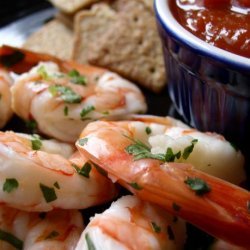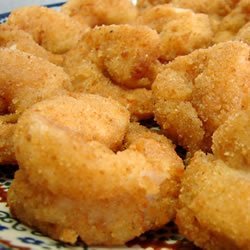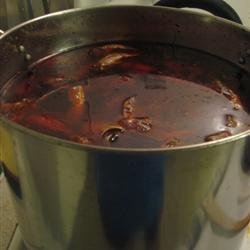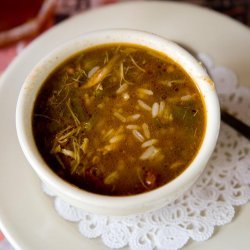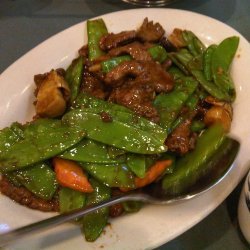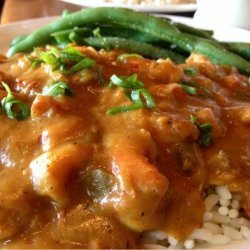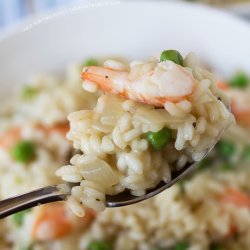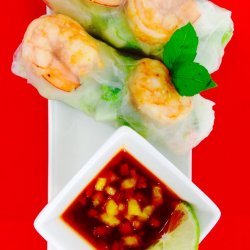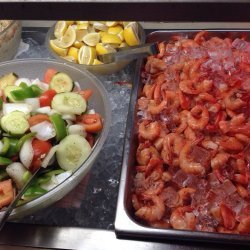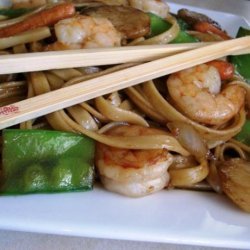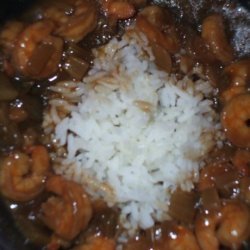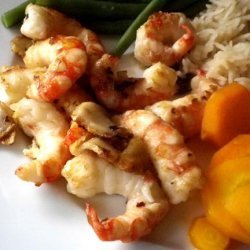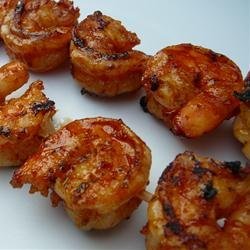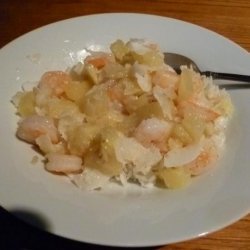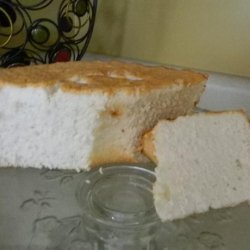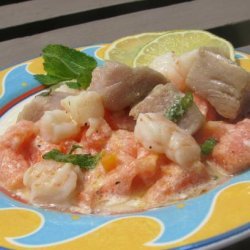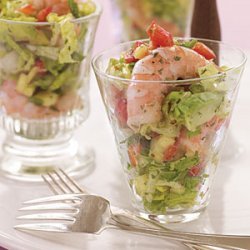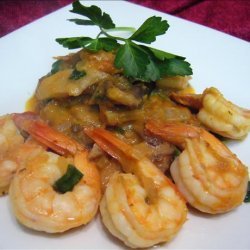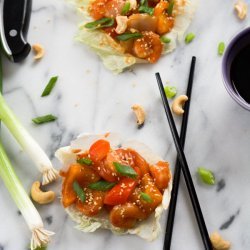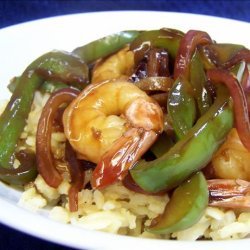Directions:
- Buying Shrimp: Shrimp is a highly perishable item and should only be purchased frozen to insure freshness. Avoid buying peeled and de-veined shrimp because the shrimp can lose some of its flavor during the cleaning process. The most consistent shrimp in size, texture, and flavor are the gulf whites which come from Mexico and Ecuador. Most shrimp imported into the United States is farm-raised Ecuadorian. Shrimp are sized according to their count per lb. The best size range for value, quality, and ease of handling is probably the 26/30 range.
- Defrosting Shrimp: Shrimp should be defrosted in the refrigerator or under cold running water. Never thaw shrimp in a microwave. Any black spots on the shell of the shrimp indicates that spoilage has begun. A gritty residue on the shells indicates the product has been bleached to remove these signs of spoilage. If either condition is evident, return the shrimp to where it was purchased.
- Peeling Shrimp: Shrimp will retain more of its flavor if it is cooked in the shell. It is a good idea to leave the shell on if poaching or grilling shrimp. De-veining is optional but be aware this gritty, stringy vein can be very unappetizing. It is preferable to remove the vein, especially if the shrimp is poached and cooked for shrimp cocktail.
- Deveining: Before you begin to devein your shrimp, start by keeping them in a bowl of ice water. This will keep the shrimp fresh while you are working on the others.
- If you will be using shrimp that have already been shelled, the only thing you will need is a small, thin, sharp knife. A common paring knife will do. Start by holding the shrimp, backside up, and run your knife down the length of the shrimp. This will expose the vein. To remove the vein you can use your finger, or the tip of your knife to pull it out of the shrimp. You may also run the shrimp under a stream of cold water which, in some case, the vein will simply wash away. When finished, replace the shrimp into the ice water to keep it fresh until you are finished deveining and ready to cook.
- If you plan on cooking your shrimp with the shell still on, you can still devein them. In this case you will need a shrimp deveiner, a knife-like kitchen tool made specifically for deveining shrimp with their shells on. This can be purchased at any kitchen supply store.
- Start by holding the shrimp backside up, and place the deveiner under the tip of the shell. Gently slide the deveiner up the back of the shrimp, towards the tail. The deveiner has a serrated edge that the vein will adhere to, while cutting the shell with its sharp, upper edge.
Nutrition Facts
| Amount Per 1 Serving | |||
| Calories | 174.6 Kcal (731 kJ) | ||
| Calories from fat | 96.94 Kcal | ||
| % Daily Value* | |||
| Total Fat | 10.77g | 17% | |
|---|---|---|---|
| Cholesterol | 32.88mg | 11% | |
| Sodium | 647.94mg | 27% | |
| Potassium | 46.48mg | 1% | |
| Total Carbs | 15.87g | 5% | |
| Dietary Fiber | 0.57g | 2% | |
| Protein | 4.54g | 9% | |
| Iron | 0.6mg | 3% | |
| Calcium | 16.4mg | 2% | |
| Amount Per 100 g | |||
| Calories | 308 Kcal (1290 kJ) | ||
| Calories from fat | 171 Kcal | ||
| % Daily Value* | |||
| Total Fat | 19g | 17% | |
|---|---|---|---|
| Cholesterol | 58mg | 11% | |
| Sodium | 1143mg | 27% | |
| Potassium | 82mg | 1% | |
| Total Carbs | 28g | 5% | |
| Dietary Fiber | 1g | 2% | |
| Protein | 8g | 9% | |
| Iron | 1mg | 3% | |
| Calcium | 29mg | 2% | |
* Percent Daily Values are based on a 2000 calorie diet. Your daily values may be higher or lower depending on your calorie needs.
Find out how many calories should you eat.
Get Your Recipe of Health!
Follow RecipeOfHealth on Facebook!


